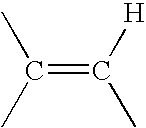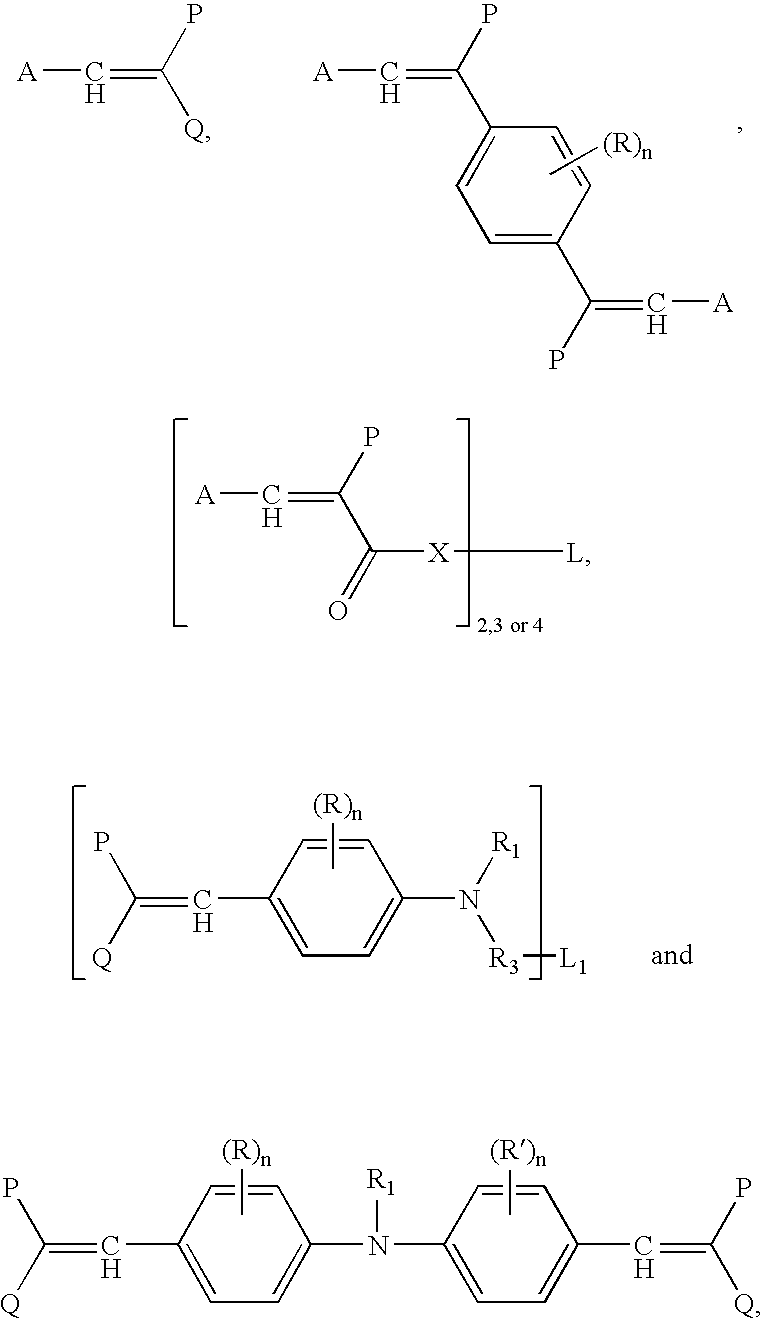Polyester polymer and copolymer compositions containing titanium and yellow colorants
a polymer and copolymer technology, applied in the field of polymer compositions, can solve the problems of poor electromagnetic radiation absorption of polymers, especially pet, and material negative effect on the visual appearance of pet containers, and achieve the effect of darkening the appearance of articles and reducing the permeability of polymers
- Summary
- Abstract
- Description
- Claims
- Application Information
AI Technical Summary
Problems solved by technology
Method used
Image
Examples
example 1
[0251]In this example, the effect of addition of a yellow colorant to a PET polymerization process was evaluated. Two polymers were prepared. The control polymer contained titanium nitride reheat additive and red toner. The titanium nitride particles had a nominal average particle size of 20 nm and were purchased from Hefei Kiln. The red toner used was the anthraquinone colorant disclosed in Example 21 of U.S. Pat. No. 5,384,377: I,5-bis(5-(N-(2-hydroxyethyl)-N-ethylsulfamoyl)-2-methoxyanilino)anthraquinone. (CAS# 163485-98-1). The test polymer contained the same titanium nitride reheat additive, the same red toner and Yellow Colorant 1.
[0252]Yellow Colorant 1 has the structure:
[0253]wherein (R)n represents a —CH3 group at the 3 position; R1 and R2 are each
P is CN, and Q is CO2CH3. (CAS# 53554-75-9).
[0254]The polymers were molded into discs with a diameter of 3 cm and a thickness of 0.17 cm using a Daca MicroCompounder / MicroInjector. A HunterLab Ultrascan spectrophotometer was used ...
example 2
[0255]This example demonstrates the effectiveness of yellow colorants to decrease the blueness of a resin containing titanium nitride using a blending method. A PET concentrate was prepared from Yellow Colorant 1, Yellow Colorant 2, and Yellow Colorant 3. The structure of Yellow Colorant 1 is described above. Yellow Colorant 2 is ethyl [[4-(dimethylamino)phenyl]methylene]propenedioate (CAS# 3435-56-1). Yellow Colorant 3 is 1,5-bis(2-carboxyphenylthio)anthraquinone (CAS # 76404-13-2).
[0256]The PET resin used to prepare the yellow colorant concentrate was Eastman PET CM01, which is commercially available from Eastman Chemical Company. The concentrates were prepared by combining the yellow colorant with CM01 resin and then extruding the mixture at 275° C. on a Daca MicroCompounder. The extrudate was cryogenically ground in a Wiley Mill to form a coarse powder. The nominal amounts of yellow colorant in each of the concentrates were the following:
[0257]Concentrate 1: 0.0025 wt % Yellow C...
example 3
[0262]This example demonstrates the effectiveness of polymeric yellow colorants to decrease the blueness of a resin containing titanium nitride. Yellow Colorant 4 is a methine type polymeric colorant and has the following structure:
[0263]Yellow Colorant 5 is an anthraquinone type polymeric colorant and has the following structure:
[0264]Yellow Colorant 4 and Yellow Colorant 5 are disclosed in Coloration Technology, (2003), 119(1), pp 48-56, by Weaver, et. al.
[0265]Concentrates of the polymeric yellow colorants were prepared in Eastman PET CM01 as described in Example 2. The nominal amounts of polymeric yellow colorant in each of the concentrates were the following:
[0266]Concentrate 4: 0.0025 wt % Polymeric Yellow Colorant 4
[0267]Concentrate 5: 0.015 wt % Polymeric Yellow Colorant 5
[0268]The effect of each polymeric yellow colorant on PET resin color was determined by blending the concentrate with production grade PET Resin A, using the method described in Example 2. The results are g...
PUM
| Property | Measurement | Unit |
|---|---|---|
| Temperature | aaaaa | aaaaa |
| Fraction | aaaaa | aaaaa |
| Fraction | aaaaa | aaaaa |
Abstract
Description
Claims
Application Information
 Login to View More
Login to View More - R&D
- Intellectual Property
- Life Sciences
- Materials
- Tech Scout
- Unparalleled Data Quality
- Higher Quality Content
- 60% Fewer Hallucinations
Browse by: Latest US Patents, China's latest patents, Technical Efficacy Thesaurus, Application Domain, Technology Topic, Popular Technical Reports.
© 2025 PatSnap. All rights reserved.Legal|Privacy policy|Modern Slavery Act Transparency Statement|Sitemap|About US| Contact US: help@patsnap.com



